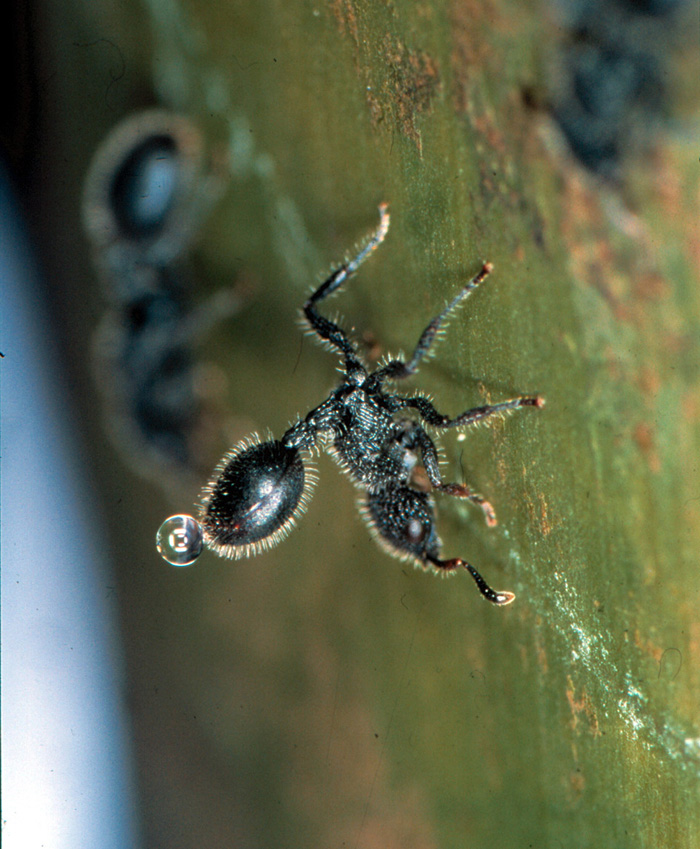
Flood defense in ants: "communal peeing" (PDF)
Joachim Moog, Department of Zoology, University of Frankfurt
Flooding can force people to abandon their homes, but ants living in the rainforests of Malaysia keep their nests dry by "peeing" the floodwater away.Generally, flooding of nest sites is a serious hazard for ants. Even for ants nesting in the tree crowns of tropical rainforests, heavy showers pose an unpredictable threat. Construction of nests build of, or attached to, "waterproof" leaves is a common phenomenon, but little information is available on the flood control behaviours of arboreal ants nesting in plant cavities.
Ulrich Maschwitz and Joachim Moog of Frankfurt University studied the behaviour of the bamboo-nesting ant, Cataulacus muticus, in the Gombak Valley 30 km north of Kuala Lumpur (Maschwitz and Moog, 2000). The ants live in clumps of 15-metre-high giant bamboo (Gigantochloa), making their nests between the partitions in the hollow stems. But a home in a high-rise apartment block is no guarantee against flooding, as water from torrential rain runs down the stems and in through the nest entrance.
Cataulacus muticus has developed a two-graded response to nest flooding. Plan A: Batten down the hatches by blocking the doorway with your head. If this collective sandbag technique doesn't hold back the waters, move on to Plan B: Start drinking. Hundreds of ants fill up on the unwanted water seeping in their colony and head outside to excrete it away from the nest.
 |
|
| Fig. 1 A Cataulacus muticus worker raises the gaster and excretes a droplet. Photo: Ulrich Maschwitz. |
The researchers designed a simple lab experiment to carefully watch the ants in action. Three colonies of ants were housed in transparent plastic tubes identical in shape to the hollow spaces in their natural bamboo homes. When they put two millilitres -about half-a-teaspoon- of coloured water into the nests, they found that the ants drank it, before heading out of the nest and each excreting a large droplet of water. Over the next two days, the 800 ants worked together to drink the water and make more than 3,000 trips to the "toilet".
Cataulacus muticus is the only ant known to "pee" its flood problems away, although other ants "spit" water out of their nests. The latter mode of flood defense has been reported in a pseudomyrmecine ant species, Tetraponera binghami, living in bamboo internodes (Klein et al. 1994) and in several species of the formicine genus Cladomyrma (Moog et al. 1997) inhabiting the live stems of ant-plants. Other means of flood control by ants include the carrying of water droplets adhering to their body (Camponotus (Colobopsis) sp.1, Federle et al. 1998) and the reduction of water inflow by blocking the nest entrance with their heads (Polyrhachis schellerichae, Schellerich-Kaaden et al. 1997). But these tricks are limited to ants that live in stems. Species that can move house easily, such as those that nest in rotting logs, probably prefer to relocate. The water-bailing capacity of stem-nesting ants in Malaysian forests enables them to nest in a microhabitat where floods are a common phenomenon.
Joachim Moog (17.02.2005)
Literatur
Zurück zum Überblick "Ökologie"




